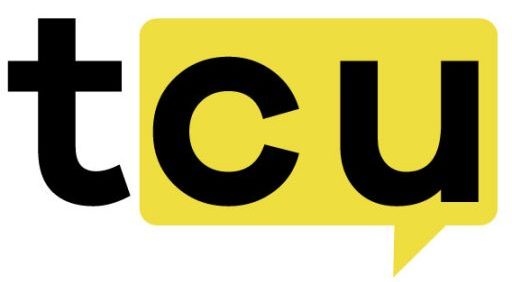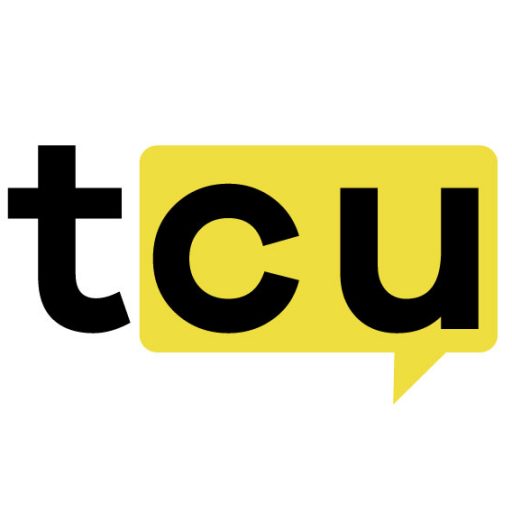The cryptocurrency market is constantly shifting, with investors always on the lookout for the next big thing. Low-cap cryptos often offer massive growth potential, making them an attractive choice for those looking to enter at the ground level before mainstream adoption kicks in.
As we move further into 2025, Qubetics, Cosmos, Cronos, Render, Hedera, Arbitrum, Avalanche, Polkadot, Polygon, and Cardano are emerging as some of the most promising low-cap cryptos with strong fundamentals, cutting-edge technology, and real-world use cases. Let’s break down why these ten projects are worth your attention.
1. Qubetics: Pioneering Blockchain Development with QubeQode IDE
Qubetics is revolutionizing blockchain development with its innovative QubeQode IDE, making it easier for developers to build decentralized applications (dApps) seamlessly across multiple chains. Unlike traditional blockchain environments that require complex coding and multiple integrations, QubeQode simplifies the process, making development more accessible, scalable, and efficient.
Currently, the crypto presale is in its 22nd presale stage, with over 484 million tokens sold and $13.6 million raised. The current price of $TICS stands at $0.0807, with massive ROI projections ranging from 209% to over 18,000% post-mainnet launch.
How QubeQode IDE Helps Developers and Businesses
Imagine a freelance blockchain developer who needs to build a cross-chain application. With traditional tools, they would have to juggle multiple SDKs and integrations. QubeQode eliminates that hassle by offering an all-in-one environment, allowing developers to build, test, and deploy on multiple blockchains effortlessly.
Why Did This Coin Make it to This List?
Qubetics is addressing a major gap in blockchain development, and its strong presale numbers and cutting-edge IDE solution position it as a top low-cap crypto to watch in 2025.
2. Cosmos: The Internet of Blockchains
Cosmos is a leader in blockchain interoperability, allowing different networks to communicate seamlessly using its Inter-Blockchain Communication (IBC) protocol. Recent updates, including liquid staking and enhanced governance models, have further solidified Cosmos’ position in the DeFi space.
For a DeFi trader managing assets across multiple chains, Cosmos makes it possible to transfer assets seamlessly without relying on centralized exchanges. This interoperability is critical for the next generation of blockchain applications.
Why Did This Coin Make it to This List?
Cosmos is paving the way for a connected blockchain ecosystem, making it an undeniable force in the crypto industry.
3. Cronos: The Future of DeFi and Payments
Cronos, backed by Crypto.com, is seeing rapid adoption in DeFi, NFT markets, and real-world payments. Its latest Ethereum Virtual Machine (EVM) compatibility upgrades are attracting developers and enterprises alike.
With millions of users in the Crypto.com ecosystem, Cronos provides seamless access to DeFi and crypto payments, making it an essential blockchain for both developers and everyday users.
Why Did This Coin Make it to This List?
Cronos is bridging the gap between crypto payments and decentralized finance, setting the stage for mass adoption.
4. Render: The Powering Force Behind Decentralized GPU Computing
Render Network is enabling decentralized GPU rendering, supporting industries like gaming, AI, and visual effects. With demand for high-performance computing skyrocketing, Render is a game-changer.
For a 3D artist or AI developer, traditional cloud-based GPU solutions are expensive and slow. Render provides a decentralized alternative, offering cost-effective, scalable computing power.
Why Did This Coin Make it to This List?
Render is powering the future of decentralized computing, making it a high-potential low-cap crypto investment.
5. Hedera: Enterprise-Grade Blockchain for the Future
Hedera Hashgraph is redefining enterprise blockchain with its fast, low-cost, and energy-efficient network. It’s attracting major corporations and is gaining adoption in tokenization, supply chain, and DeFi.
For banks and financial institutions, Hedera offers secure, high-speed transaction processing, making it an ideal blockchain for real-world enterprise adoption.
Why Did This Coin Make it to This List?
Hedera’s focus on enterprise solutions and mainstream adoption makes it a top low-cap crypto with serious growth potential.
6. Arbitrum: Scaling Ethereum to New Heights
Arbitrum is one of the leading Layer 2 solutions built on Ethereum, designed to reduce gas fees and increase transaction speeds. With Ethereum’s congestion issues persisting, Arbitrum has seen major adoption in the DeFi and NFT sectors. The introduction of Arbitrum Orbit has further enhanced its ecosystem by allowing developers to build customized Layer 2 chains.
For DeFi traders and developers, Arbitrum offers a low-cost, high-speed environment for executing transactions without Ethereum’s high fees. Many top DeFi projects, including Uniswap and GMX, have migrated to Arbitrum for better scalability.
Why Did This Coin Make it to This List?
Arbitrum’s strong developer adoption, scalability improvements, and integration with Ethereum’s ecosystem make it a top low-cap crypto to watch.
7. Avalanche: The Future of DeFi Scalability
Avalanche continues to lead in high-speed smart contract execution, offering near-instant transaction finality. Its innovative Subnet technology allows institutions and projects to deploy custom blockchains while maintaining interoperability with the main Avalanche network.
For DeFi and gaming projects, Avalanche provides a low-latency, high-throughput alternative to Ethereum. The adoption of subnets has attracted enterprise blockchain users and game developers looking for scalability without high costs.
Why Did This Coin Make it to This List?
Avalanche’s focus on scalability, DeFi expansion, and institutional partnerships makes it a high-potential low-cap investment.
8. Polkadot: Multi-Chain Innovation
Polkadot is known for its multi-chain interoperability, allowing different blockchains to communicate and share security. Its Parachain auctions continue to bring innovative projects into the ecosystem, strengthening its role in Web3 development.
For developers and enterprises, Polkadot offers a scalable, customizable blockchain environment where they can launch independent chains while leveraging the security of the Polkadot Relay Chain.
Why Did This Coin Make it to This List?
Polkadot’s interoperability features, growing developer ecosystem, and innovative Parachain model position it as a key player in the low-cap crypto space.
9. Polygon: Layer 2 Scaling Solution for Ethereum
Polygon has been at the forefront of Ethereum scaling solutions, providing a robust Layer 2 network with low fees and high transaction speeds. Its recent integration of zero-knowledge rollups (zkEVM) has further enhanced its performance and security.
For Ethereum users and developers, Polygon offers a cost-effective, scalable solution while maintaining full compatibility with Ethereum’s smart contracts and dApps.
Why Did This Coin Make it to This List?
Polygon’s Layer 2 scaling solutions, zkEVM advancements, and growing ecosystem adoption make it a must-watch low-cap crypto.
10. Cardano: The Future of Smart Contracts and Decentralization
Cardano has been steadily expanding its smart contract capabilities, with the launch of Plutus V2, improving transaction efficiency and scalability. Cardano’s focus on research-driven development continues to make it a favorite among long-term investors.
For dApp developers and enterprises, Cardano provides a secure, scalable platform built on peer-reviewed research, making it an attractive choice for mission-critical applications.
Why Did This Coin Make it to This List?
Cardano’s commitment to decentralization, smart contract innovation, and ongoing ecosystem growth make it a top pick in the low-cap crypto space
Final Thoughts
Based on our research and analysis, these ten low-cap cryptos—Qubetics, Cosmos, Cronos, Render, Hedera, Arbitrum, Avalanche, Polkadot, Polygon, and Cardano—stand out as the most promising investments for 2025. Each of these projects is solving real-world problems, making them top picks for long-term gains.
For those looking to capitalize on the next big wave in crypto, these low-cap projects offer huge upside potential.
For More Information:
Qubetics: https://qubetics.com
Telegram: https://t.me/qubetics
Twitter: https://x.com/qubetics
FAQs
1. Why are low-cap cryptos considered high-potential investments?
Low-cap cryptos often have smaller market capitalizations compared to large-cap cryptocurrencies like Bitcoin and Ethereum. This means they have more room for exponential growth, especially if they solve real-world problems and gain mainstream adoption.
2. What makes Qubetics a standout project in the low-cap crypto space?
Qubetics is revolutionizing blockchain development with its QubeQode IDE, which simplifies decentralized application (dApp) building across multiple blockchains. Its ongoing presale success and projected ROI make it one of the most promising investments in 2025.
3. How does Cosmos improve blockchain interoperability?
Cosmos uses its Inter-Blockchain Communication (IBC) protocol to connect independent blockchains, allowing seamless asset transfers and data sharing. This eliminates the need for third-party bridges, reducing security risks and enhancing scalability.
4. Why is Arbitrum an important player in the Ethereum ecosystem?
Arbitrum is a Layer 2 scaling solution that reduces Ethereum gas fees and increases transaction speeds. Many DeFi projects and NFT marketplaces have migrated to Arbitrum to benefit from lower costs and better efficiency.
5. Which of these cryptos has the highest potential for mainstream adoption?
While all the projects listed have strong fundamentals, Cronos and Polygon are particularly well-positioned for mainstream adoption due to their integrations with major exchanges, DeFi applications, and payment networks.
![]()


